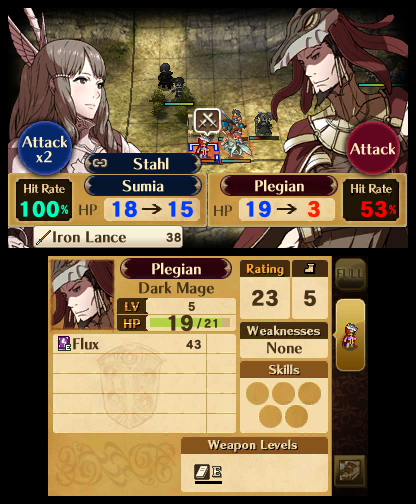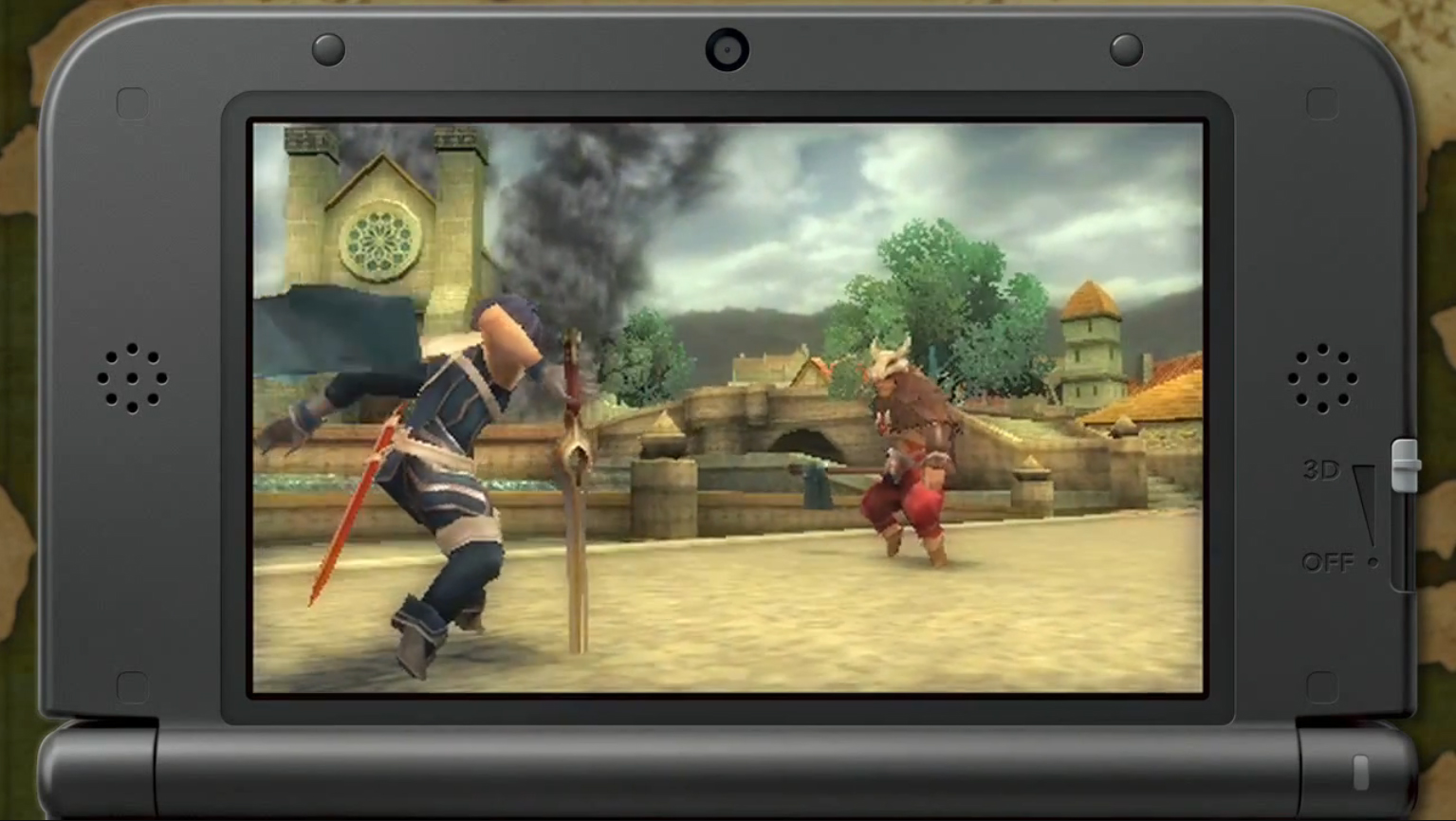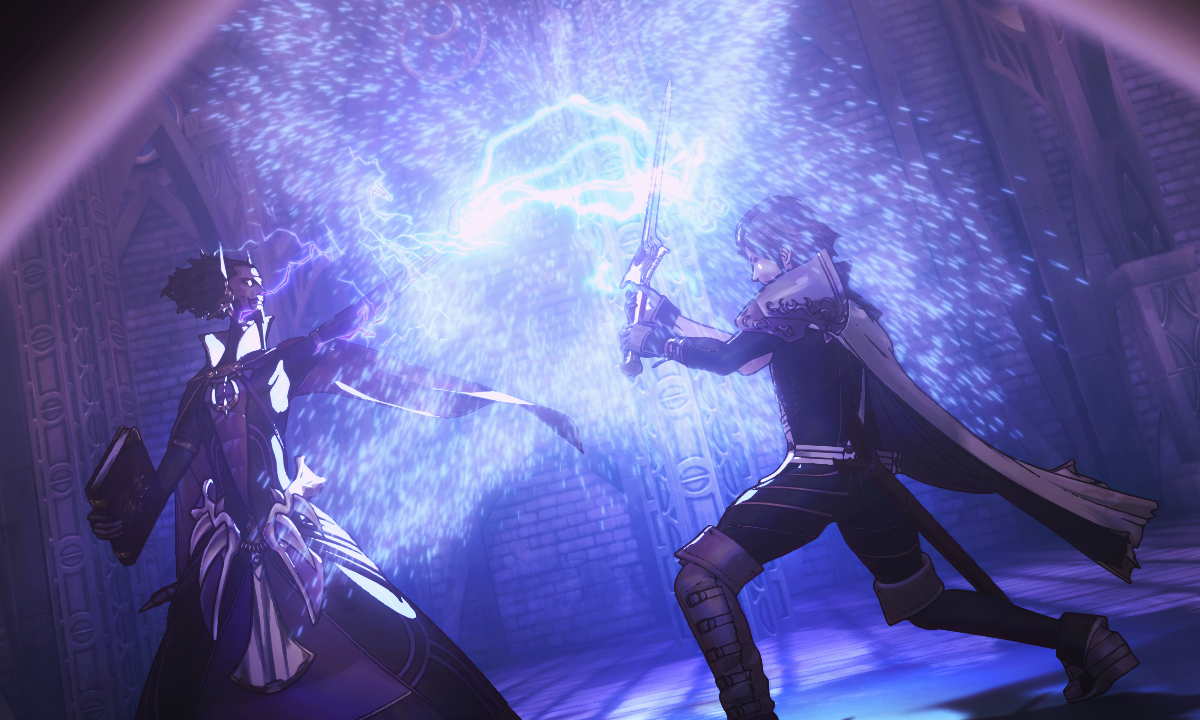Do you know which game Marth and Ike belong to? I didn`t, yet I never questioned their existence in Super Smash Brothers. I accepted the fact that they came from a Nintendo franchise without ever stopping to think of which one exactly.
Fire Emblem Awakening made me realize that both Marth and Ike belonged to the Fire Emblem franchise – a franchise with a relatively small audience. Fire Emblem targeted people looking for a challenging grid based strategy game who also didn’t fear the consequence of their character’s permanent death.
With the inclusion of a Casual mode – which disables permanent death and enables manual saves any at time during battle – Fire Emblem Awakening’s accessibility welcomes audiences beyond the punishment seeking community. With new modes introduced, Fire Emblem Awakening can produce a variety of difficulty settings for each player’s specific desires, removing the barrier between a frustrating strategy game and an addictive one.
Like almost every other Japanese RPG ever made, you wake up in a grass field with a case of amnesia, remembering nothing about your past except your name. Woken up by Chrom, Prince of the Halidom of Ylisse, he welcomes you into his party to assist in the war between the countries of Ylisse and Plegia.
To win the war, an understanding of basic weapons counters will give advantages during fights. Built around a “Weapons Triangle”, units with swords beat axes, axes beat lances and lances beat swords. Forget the counters and move units carelessly into groups of enemies and the fight will quickly favour the enemy. My strong, flying or ground mounted units – used to transport my slow travelling units – died countless times by insignificant bowmen who wield advantages to mounted units. Carelessly losing a unit, even on Causal mode, can really alter the remainder of the fight. The ease at which some characters die will bring greater value to each character and each turn, especially on Classic mode where units die permanently. Careless mistakes will happen. To avoid death I would usually take the transported unit and position him to withstand brunt of the damage – something only possible through pairing.
To develop relationships between characters, pairing up units on the battlefield produces combat bonuses and opens up dialogue opportunities. You can either pair up units on adjacent tiles or pair them up on a single tile. Pair them up on adjacent tiles and each unit attacks, moves and uses items individually. Pair units on a single tile they will provide the same benefits, except secondary units cannot receive any of orders. The second unit in the pair can attack and defend automatically alongside the primary unit, with the activation rate based on the relationship rating of the pairing.

Pairing a unit with opposite gender opens up the chance for “S” rank relationships. Kill enough enemy units and survive incoming attacks and the relationship between characters begins to grow. The better the relationship the higher the bonuses a supporting character will provide. Finding the best team, not only compatible on the battlefield but a pairing you find to best fit a romance, became a huge exploratory aspect of Fire Emblem Awakening. Over the course of the game when I found new people to join my party, even if a character clearly displayed better statistics in every category, their compatibility both in and outside of combat proved important. Some characters, no matter how much you want them to marry and get that “S” rank, will produce a terrible match up in combat. The idea of marriage doesn’t bother me, but the delivery of the proposals and the ease at which it comes, produces some cringe worthy awkward situations.
I grew attached to many characters, and depending if you choose the Classic or Casual mode at the start of the game, characters can die permanently. I first started on “Hard Classic” since many people regarded Normal as too easy, and chose Classic mode to stay true to the Fire Emblem roots. But I couldn’t deal with the permanent death associated with Classic; I grew too fond and too dependent on specific characters to afford losing them forever. I often shut off my 3DS when someone died in battle, so I restarted the game entirely and picked the Casual mode where character death only lasts the duration of the battle.
Permanent death will bring value to each character and a challenge that requires large amounts of foresight to stay alive. Fire Emblem Awakening provides enough options for players to make it the most accessible strategy RPG or the most difficult and unforgiving one. Previous Fire Emblems lacked the difficulty customization; the game forced permanent death upon players which can get in the way of experimenting with the combat or enjoying any narrative. And you will die; you cannot avoid it. Some fights will blindside you with strong, far traveling units or introduce mission objectives that will require sacrifice.
If you manage to stay alive, characters will engage in conversation outside of battle. Unlike Mass Effect or Dragon Age where party members take their own spot in the camp or on a ship, everything happens through menus. To see the characters talk, their relationships must build significantly enough during battle to make the option available in the Support menu.

I looked forward to the opportunities to see characters speak and develop, but their conversations rarely interested me. Much like the rest of the story telling, the conversations padded the time between fights – the fights the best part of Awakening. I wouldn’t mind the conversation between battles in order to bring a change of pace, but better topics of conversation would bring greater value to the character’s development.
Developer Intelligent Systems tells a story that often pads time between fights. At first I thought that both of the story arcs of the war and your enigmatic background would develop within the overall narrative and eventually converge to introduce an unexpected direction. Nothing interesting happens. The war does progress, but your character’s amnesia – in which the game often references early on – receives little development throughout, yet the game constantly reminds you like it plays greater significance.
Separate from the overall Support rating between characters, character classes actually bring significant growth and development. At each new level, mage classes will see more growth in areas of magic, where as swordsmen will see more growth in strength. When characters reach level 10, they can evolve into an advanced class. The new class will change appearance, grant new skills and provide boosts to majority of major stats. Each class only evolves into a single advanced class, but characters can Re-class to the first tier to learn new skills and further statistical growth. To see a character grow from a weak, instantly killed unit to a damage dealing tank, who survives onslaughts from multiple enemy units, made me want to show that unit off like a trophy.
Even when saddled with Japanese RPG clichés, Fire Emblem Awakening’s grid based combat – heavily focused around paring units – easily makes Awakening as one of the best games on the 3DS. The character interaction and plot development doesn’t match the quality of the combat or class progression, and will ultimately disappoint anyone looking for a meaningful narrative. With the inclusion of a variety of difficulty settings, Awakening welcomes players looking for a moderately challenging strategy game or players who gain some weird arousal in gruelling punishment.

